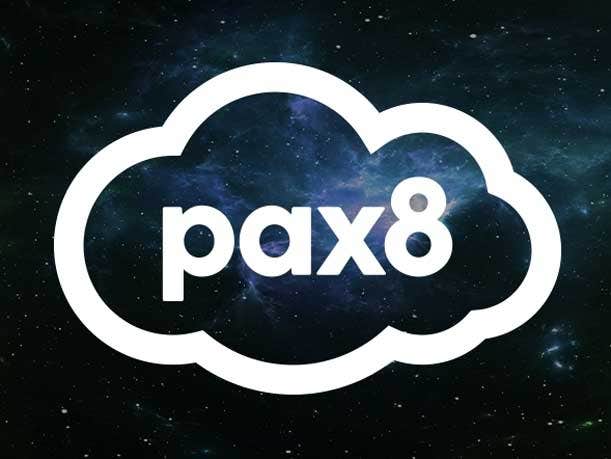Pax8 Execs On Revamped Marketplace: MSPs ‘Ready To Move Today’ Will Win
‘It may be assumed that large wins over small, but it’s not that. It’s readiness. Are you prepared? Have you defined your profile? ... If you’re small and you jump on this, you could be in there before somebody large who can’t move the ship,’ Ryan Walsh, Pax8’s channel chief and chief strategy officer, tells CRN.

Ryan Walsh and Nicky Heddy said Denver-based Pax8 is no longer a distributor but a cloud marketplace.
And the revamped cloud marketplace that was unveiled at Pax8’s inaugural Beyond event this week will be using the power of data and AI to act as a customer acquisition engine for its partners.
The marketplace enables Pax8 to help MSPs get matched up with end customers who are looking to buy direct through Pax8’s vendor partners.
Through a “buy now” button that most Pax8 vendor partners will have on their websites, end customers will be rerouted to Pax8’s marketplace and prompted to answer questions that will match them with an MSP if they don’t have one already.
“The opportunities are presented within the marketplace but not provided to the vendor,” said Walsh, channel chief and chief strategy officer for Pax8. “Vendor opportunities are there for the MSP to make decisions and [find] an opportunity to explore.”
Pax8 partners that opt in will sync their data through their PSA and RMM tools, which will unlock a complete view across all of their customers.
MSPs must opt into the feature and also answer questions on what type of customers they’re looking for. If an MSP and an end customer’s criteria match up, they then get connected through Pax8’s matchmaking capability, according to Heddy, chief commerce officer for Pax8.
“Many of our vendors today, like over a dozen, feed us prospect leads today,” Heddy told CRN. “They are saying they are interested. They’re saying, ‘We want to feed Pax8’s amazing ecosystem of partners.’
Excitement from MSPs about the prospect-led marketplace was felt as some MSPs told CRN they are looking forward to getting help in sales and customer acquisition, but concerns arose about data sharing, product recommendations and democratizing the marketplace.
CRN sat down with Walsh and Heddy to discuss partner concerns so they can ensure partners that it is an “independent marketplace.” Here’s what the executives had to say.

If all MSP data is coming from their PSA, what information are you giving to your vendors?
Heddy: So obviously we had to think long and hard about this … especially [around] information that is protected by PII [personal identifiable information] and has to deal with consumer data and governance of that data. So yes, partners need to opt in to agree to this or opt out. Microsoft has been running a program for a long time that is called CloudAscent. CloudAscent is suggesting a next logical product. Now, it’s not their name or anything that is personally identifiable so it’s not their contact information, their name or their business name. It is leveraging big data to spot and identify trends within our industry. Then if a partner opts in, they can see their customer data through that lens. So no customer data is being shared, no trend data is being shared. So that’s a big important piece, no one’s getting the contact information of anybody’s customers. Here is a lens, and you can visualize your data through this lens. But the only thing that would be shared with a vendor would be, ‘Look at this opportunity. Would you like for partners who opt in to provide a special promotion for them?’
Walsh: That’s the nuance of what we’re talking about here. When you look at opportunities, that is the MSP utilizing their data. Many of them give their data today in the industry, but it’s all authorized. There’s no unauthorized use of their own data. So when they see their customer grid … that’s not shared with a vendor, that is used within our marketplace for them to figure out where product gaps are.
The opportunities are presented within the marketplace but not provided to the vendor. Vendor opportunities are there for the MSP to make decisions and [find] an opportunity to explore. The second part of that is there will be an opportunity for a vendor to come in and offer a promotion. The control and the decision point is going to fall right into the partner. They decide if they want to utilize that. Now when that happens, that’s when some data sharing could happen in terms of how they target the right customer of that MSP.
What it’s going to require an MSP to do is identify an ideal customer profile.
Can MSP customers opt in or opt out?
Heddy: Yes.

What protections are you giving to MSPs in exchange for receiving and processing their data?
Heddy: As a company that is growing, there are lots of regulations and governances that we must adhere to, things such as PII. Those same protections are already in place today and we will adhere to those same protections. We’re going to stick to the rules that we have always been sticking to and make sure that no personal identifiable information is being shared anywhere where both people don’t want to have that information shared. Where both people have to swipe right, then and only then will we connect them.
Will the prospect marketplace be free or a paid service that MSPs have to buy into?
Heddy: It’s free to MSPs.
How is Pax8 going to steer product recommendations among competitive solutions in the marketplace?
Heddy: We’re going to present options. We do this today in a somewhat manual way but we usually suggest a category and then subcategory level, then present the options of vendors that are in that subcategory level. Now some of our vendors are a better fit for SMB, some are a better fit for mid[size], some are a better fit for enterprise. So how many users do they have? What industry are they in? Those are other things where we would have a vendor score so we might present options and say, ‘Here is the top option based on what we see.’
Walsh: That option and choice is not going to go away. We’re not going to eliminate their ability to make a choice based on their options.

How are you going to convince vendors to have that ‘buy now’ button on their website?
Heddy: My intuition is saying that 90 percent of the vendors in our space have a form fill on their website. It asks questions like, ‘How many users? How many workflows?’ I can tell you that, not often at the vendor level do those SMB prospects even get a call back. Many [vendors] are saying to us, ‘Hey, we would love to give this to you. Customer acquisition cost is too high and customer retention cost is also too high. So if you can take this customer, give it to your ecosystem with trusted partners, especially if you know that this one does a good job with our product today, we would love to give this to you because we know the lifetime value of this customer is five times [what it would be.]’ Many of our vendors today, like over a dozen, feed us prospect leads today. They are saying they are interested. They’re saying, ‘We want to feed Pax8’s amazing ecosystem of partners.’
Walsh: I want to bring something to bear here. I do not believe this is going to be hard to do. Some vendors who have a strong MSP focus may not think they need to do that. But I can tell you so many come in saying, ‘Look we’re enterprise-focused, we don’t know how to really handle what to do with the lower end of the market. A ‘buy now’ [button] is going to be welcomed for anybody in that category.
How do you plan on democratizing the marketplace? How do you make sure that large MSPs don't take it over?
Heddy: You need to build out your profile as a partner. Just like we give our partners the option, we’re going to be giving customers the option.
Walsh: It may be assumed that large wins over small, but it’s not that. It’s readiness. Are you prepared? Have you defined your profile? Do you have an ideal customer profile? Have you cleaned your data in terms of what your customers buy? If you’re small and you jump on this, you could be in there before somebody large who can’t move the ship. It is democratized and it will be dictated by who’s ready to move today.

If an MSP uses a vendor that’s not on the marketplace, are you going to steer them to a vendor on your line card?
Heddy: Part of a partner profile is going to be their preferences. The partner chooses the vendors that are in their storefront. So if you would like to help Pax8 give partner insights, they also in their partner profile set up preferences. So if they are really well-
versed on a specific vendor, then we will steer them prospects for that vendor. We’re not going to make recommendations on products that they don’t want or they don’t like ,and that will be part of the preferences.
We’re an independent marketplace. We make suggestions on category and subcategory, which are guided by your preferences when you’re setting up your profile.
Walsh: I really want to call this out. Curation and choice is how we believe this marketplace wins. There are options out there today that say, ‘I just want you to buy my full suite. You just take this.’ The benefit of it is it’s all integrated, but that doesn’t capture the uniqueness of each and every MSP. What Nick’s talking about, curation and choice, that’s going to allow them to take their special sauce and amplify based on that curation. And they’re going to do it, not us. It’s configurable to their needs.

How do you differentiate yourself from Ingram Micro’s Xvantage platform?
Walsh: From a presentation layer, there are significant differences. When you peel it back, those are the features that I don’t see are being discussed. Using data, yes, AI and machine learning, yes you’re going to see that, but I think it’s really the outcome we’re trying to drive here, which is to capture the opportunity and growth for a partner.
Heddy: Ingram Micro is a great company, and we feel like they serve a partner segment that is different than ours. We’ve done a really good job of serving our partner ecosystem and I think we’ve done a good job over the last 10 years of earning the trust of our partners. We go after a different customer segment, one that’s more SMB-focused. Our partner type is not a legacy partner type [but] a modern MSP who understands the trends and understands what Pax8 is trying to do to connect this modern ecosystem. I think our marketplace sits at the center of the modern ecosystem and what we’re really trying to do is orchestrate our partners, our vendors and our end customers of our partners so that everybody can grow faster, become more efficient and reduce the risk of their business.
Was this a want from your partners? Have you heard from partners that were struggling with customer acquisition?
Heddy: We do, we talked to partners, vendors, customers and analysts. What we’re trying to do here is as vendors are incorporating AI and other new technologies into their product, there is absolutely a product-led strategy that is happening. Product-led growth. So we want our marketplace-led growth to keep our MSPs at the center to help them grow and do so from the product-led growth of SaaS vendors.